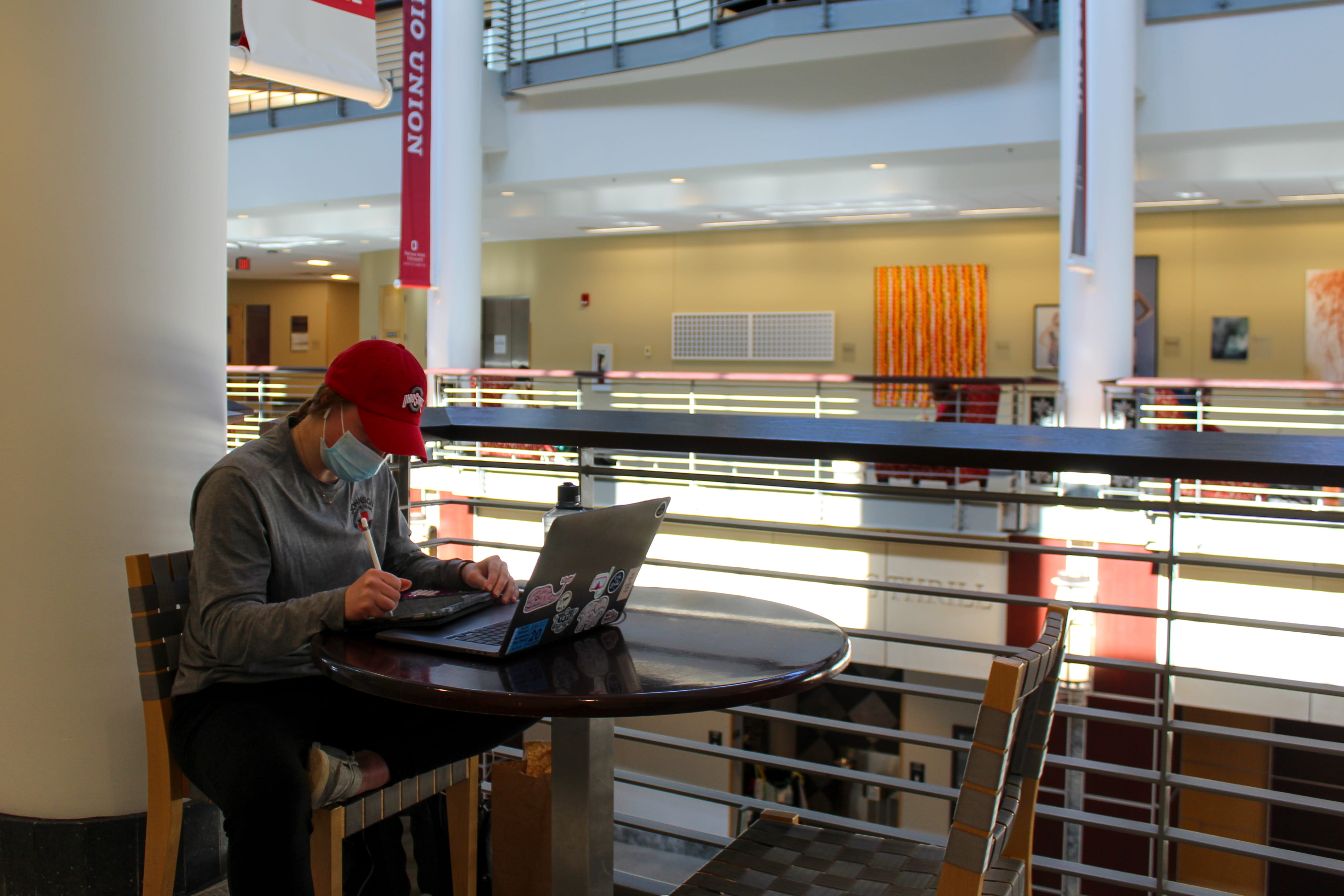
Aimed at assisting with foreign language studies, Ohio State students will now have access to a CourseShare program with other Big Ten schools and The University of Chicago. Credit: Ashley Grimmer | Lantern File Photo
Learning a new language often involves traveling the world, but students at Ohio State can now do so by traveling the Big Ten.
Students at any Big Ten school, as well as the University of Chicago, can be placed in language courses at Big Ten Academic Alliance member institutions through the CourseShare program at no extra cost if their home school does not offer their desired language, according to the program’s website. Students interested will work with their department of interest and BTAA distance education coordinators to take language courses appropriate for their level of knowledge.
The CourseShare program, created by the Liberal Arts and Sciences deans of the Big Ten universities in 2005, was designed “to provide a systematic method for sharing courses to enhance access to specialized graduate courses and low enrollment offerings,” according to its website.
The BTAA website said the program’s focus was modified in 2009 to hone in specifically on less commonly taught languages which can be taught remotely.
Jeremie Smith, Ohio State’s College of Arts and Sciences distance education coordinator, said enrollment is free to students and universities, and all credits will go on the transcript of the student’s home university. He said participants can register for these courses in the same manner as any other course at their university.
Smith said the program solves a twofold problem. With the program, departments that teach less common languages at one university can fill seats and expand the impact of their courses, and students who want to engage in advanced learning of these languages can do so if they’re not offered at their home school.
“The ability to offer instruction at a university is closely tied to the number of students that want to take a course,” Smith said.
Smith said Uzbek, a less common language offered at Ohio State, is a great example of this scenario.
“You might only have two or three students a year that are interested in taking Uzbek,” Smith said. “It’s niche, but it’s still important. And for the people who want to study Uzbek, typically, it’s not a passing interest.”
Smith said students studying these less commonly taught languages often need these language credits to support their core area of study at any number of Big Ten schools.
The BTAA Courseshare program also helps university language departments expand their reach while staying within budget, Smith said.
“It’s really a program that was born out of a difficulty offering less commonly taught languages, and also difficulty hiring people to teach them,” Smith said.
Smith said in a given semester the number of students enrolling in a specific CourseShare class is around two to three, and these students are joining already small classes.
More than 500 language courses have been offered via the CourseShare program since its launch, according to its website.
“I see it as all positive,” Smith said. “There is no downside for students, and it allows departments to offer a wider range of languages to students.”
Meraj Ahmed, a lecturer in the department of Asian and Middle Eastern Studies at the University of Minnesota, has hosted multiple students from the CourseShare program in his Hindi and Urdu language courses. Urdu became available at Ohio State in 2019 due to a BTAA program partnership with the University of Minnesota.
Both Smith and Ahmed said the program’s reach is at an all-time high following a rapid increase in distance learning methods and techniques due to the COVID-19 pandemic.
Ahmed said he has taken on more CourseShare participants in his classes — including students from the University of Maryland, University of Iowa and Ohio State.
“In the time since the pandemic, there have been a lot of changes, and most of them have been good,” Ahmed said. “Engaging in more and more workshops has helped us to find out what other teachers are doing.”
Ahmed said he believes the program will continue to build upon this improvement.
“It’s a learning process, and I feel like in the next five years or so, we will have a full-fledged and very clear modality for teaching language courses online,” Ahmed said.
Smith said strong relationships exist within the BTAA and both students and faculty across universities are positively impacted.
Ahmed said two students from the University of Chicago in his Urdu class wished they had “known about this option earlier,” and “never thought that learning language online would be that fun or easy.”
“Both of the students at that time were intimidated when they first came. They were not sure how the class would be,” Ahmed said. “They had already done two years of Urdu, and they just needed the credit to finish their requirement.”
Smith said Ohio State students wishing to take language courses offered via the BTAA CourseShare program should talk with their academic advisor and the Ohio State department which best aligns with their study plans.


